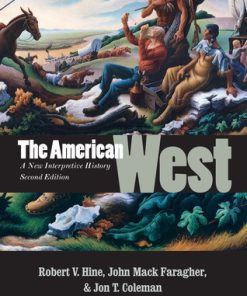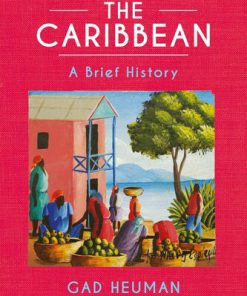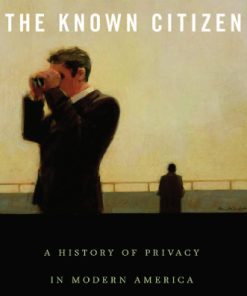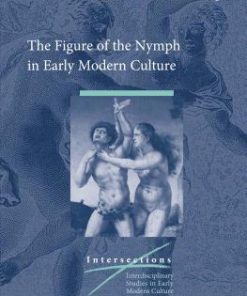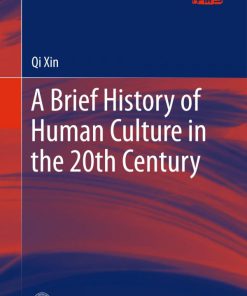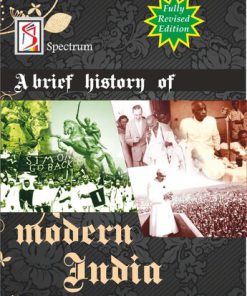China’s Revolutions in the Modern World A Brief Interpretive History 1st edition by Rebecca Karl ISBN 1788735617 978-1788735612
$50.00 Original price was: $50.00.$25.00Current price is: $25.00.
China’s Revolutions in the Modern World A Brief Interpretive History 1st edition by Rebecca E. Karl – Ebook PDF Instant Download/Delivery: 1788735617, 978- 1788735612
Full download China’s Revolutions in the Modern World A Brief Interpretive History 1st Edition after payment
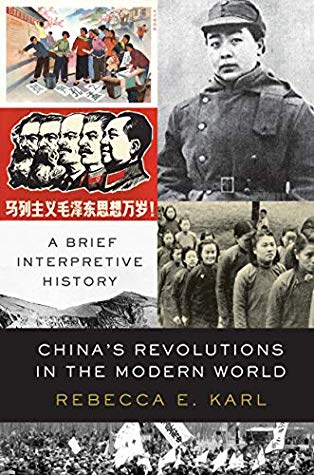
Product details:
ISBN 10: 1788735617
ISBN 13: 978-1788735612
Author: Rebecca E. Karl
A concise account of how revolutions made modern China and helped shape the modern world
China’s emergence as a twenty-first-century global economic, cultural, and political power is often presented as a story of what Chinese leader Xi Jinping calls the nation’s “great rejuvenation,” a story narrated as the return of China to its “rightful” place at the center of the world.
In China’s Revolutions in the Modern World, historian Rebecca E. Karl argues that China’s contemporary emergence is best seen not as a “return,” but rather as the product of revolutionary and counter-revolutionary activity and imaginings. From the Taipings in the mid-nineteenth century through nationalist, anti-imperialist, cultural, and socialist revolutions to today’s capitalist-inflected Communist State, modern China has been made in intellectual dissonance and class struggle, in mass democratic movements and global war, in socialism and anti-socialism, in repression and conflict by multiple generations of Chinese people mobilized to seize history and make the future in their own name. Through China’s successive revolutions, the contours of our contemporary world have taken shape. This brief interpretive history shows how.
China’s Revolutions in the Modern World A Brief Interpretive History 1st Table of contents:
Chapter 1: The Taipings
-
This chapter likely discusses the Taiping Rebellion (1850-1864), a massive civil war in China led by Hong Xiuquan, who claimed to be the brother of Jesus Christ. The Taiping movement sought to overthrow the Qing Dynasty and establish a new Christian-based kingdom. The rebellion caused millions of deaths and severely weakened the Qing Empire, setting the stage for later upheavals.
-
Interlude: Post-Taiping “Restoration”
- After the defeat of the Taiping Rebellion, the Qing Dynasty attempted a restoration to regain stability. This period involved military and administrative reforms, but the Qing Dynasty continued to struggle with internal rebellions and external pressures, such as Western imperialism.
Chapter 2: The Collapse of the Qing and the Republican Revolution
-
This chapter likely focuses on the fall of the Qing Dynasty and the revolution that led to the establishment of the Republic of China in 1912. It would discuss the causes of the Qing collapse, including corruption, failure to modernize, and the impact of foreign invasions and internal uprisings like the Boxer Rebellion.
-
Interlude: Post-revolutionary Disorder
- Following the overthrow of the Qing Dynasty, China faced political instability, with regional warlords fighting for power and the central government struggling to establish control. The early years of the Republic were marked by chaos, fragmentation, and a lack of strong leadership.
Chapter 3: The May Fourth Movement (1919) and Cultural Revolution
-
This chapter likely examines the May Fourth Movement of 1919, a significant student-led protest against the Treaty of Versailles, which transferred German-controlled territories in China to Japan. The movement sparked intellectual, cultural, and political change, promoting nationalism, anti-imperialism, and calls for modernization.
-
Interlude: Uneven and Combined—China in the 1920s
- This interlude may focus on the 1920s, a decade marked by competing political forces, including the Kuomintang (KMT) led by Sun Yat-sen, and the rise of Communist movements. It was also a time of growing interaction between traditional Chinese society and Western ideas, making the political and social landscape “uneven and combined.”
Chapter 4: Competing Revolutions in the Nanjing Decade (1927–1937)
-
The Nanjing Decade (1927–1937) refers to the period when the Kuomintang (KMT), under Chiang Kai-shek, established the Nationalist government in Nanjing. This chapter would explore the political and military struggles between the KMT and the Chinese Communist Party (CCP), as well as tensions with Japan, which led to the Second Sino-Japanese War (1937–1945).
-
Interlude: The War of Resistance against Japan
- The interlude would focus on the Second Sino-Japanese War, which began in 1937 when Japan invaded China. This war was a critical moment in Chinese history, uniting the KMT and CCP in a common struggle against a foreign invader. The war lasted until 1945 and greatly impacted the subsequent course of Chinese history.
Chapter 5: The 1949 Revolution
-
This chapter would cover the Chinese Communist Revolution of 1949, when the CCP, led by Mao Zedong, defeated the KMT in the Chinese Civil War. The chapter would detail the causes of the revolution, including the failure of the KMT government to address social and economic issues, and the CCP’s appeal to peasants. The revolution culminated in the founding of the People’s Republic of China in October 1949.
-
Interlude: The Invasion of Tibet (1959)
- This interlude likely addresses the Chinese invasion of Tibet in 1959, which resulted in Tibet becoming an autonomous region of China. The Tibetan uprising and the flight of the Dalai Lama to India marked a significant chapter in China’s expansionist policies and the consolidation of Communist control.
Chapter 6: The Cultural Revolution
-
The Cultural Revolution (1966–1976) was a decade-long movement initiated by Mao Zedong aimed at preserving and propagating Communist ideology by removing capitalist, traditional, and cultural elements from Chinese society. The chapter would explore the societal upheaval, persecution of intellectuals, and the destruction of cultural heritage.
-
Interlude: Assessing Mao, 1979–1989
- After Mao’s death in 1976, the Chinese government began reassessing his legacy. This interlude would explore the period of reform and opening initiated by Deng Xiaoping in the late 1970s, and the growing debate about Mao’s role in Chinese history. The chapter might also touch on the aftermath of the Cultural Revolution and the country’s move toward economic modernization.
Chapter 7: 1989 and Its Aftermath
-
This chapter likely focuses on the 1989 Tiananmen Square protests and the subsequent crackdown by the Chinese government. The protests were driven by demands for political reform, freedom of expression, and an end to corruption. The violent suppression of the protests marked a turning point in China’s development and its relationship with the outside world.
-
Interlude: Xinjiang 2009
- The interlude may discuss the 2009 Urumqi riots in Xinjiang, which involved ethnic unrest between the Han Chinese and the Uighur Muslim minority. This event reflects ongoing tensions in the region and the Chinese government’s policies toward ethnic minorities.
People also search for China’s Revolutions in the Modern World A Brief Interpretive History 1st :
china’s revolutions in the modern world a brief interpretive history.pdf
how many revolutions did china have
revolutions in china 20th century
write any three causes for the chinese revolution of 1911
revolutions in china russia and mexico chart
Tags:
Rebecca Karl,China’s,Revolutions,Modern,World,Brief,Interpretive,History 1st
You may also like…
History - American Studies
History - American Studies
History - American Studies
Revolutions in the Atlantic World A Comparative History 2nd Edition Wim Klooster
Politics & Philosophy - Government & Politics
The Known Citizen A History Of Privacy In Modern Amer i ca Sarah E. Igo
History - American Studies
Revolutions In The Atlantic World A Comparative History Wim Klooster
Politics & Philosophy - Cultural
The Figure of the Nymph in Early Modern Culture Karl A E Enenkel
Politics & Philosophy
Education Studies & Teaching
A Brief History of Modern India (2019-2020 Edition) by Spectrum Books Rajiv Ahir
History - Asian History




